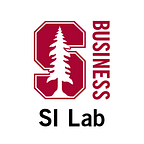How Fintech Could Benefit More Americans
What would it look like if financial technologies inclusively benefited all Americans? At Stanford Graduate School of Business’s 2019 Innovation for Shared Prosperity Conference fintech plenary session, financial industry focused venture capitalist Arjan Schutte and economist David Laibson discussed how fintech products and services could benefit more Americans.
Instead of relying on business models that are designed so that people trip up and fall into hidden fees, new fintech products should give a market return for financial capital, use transparent fees, offer fiduciary advice, and have thin margins to offer best-in-class pricing, said Harvard economics professor David Laibson. But how do you pay for this? Laibson suggests service providers can reduce their costs by combining products and by maintaining long-term relationships with customers, which will reduce their customer acquisition costs. In addition, technology can help automate recommendations and services to further reduce costs.
Venture capitalist Arjan Schutte noted that in his experience he has found only a small set of traditional financial products that offer an acceptable market return and make low-income families better off. Schutte is hopeful, however, that technology can improve things for the lower end of the income distribution. He believes we need to broaden how we think about using technology in financial products and services and sees the potential to transform the infrastructure supporting financial services. For example, delays in our current system disproportionately disadvantage low-income people. Improving the Automated Clearing House (ACH) network to work in real time would make a huge difference. Right now, it can take one to two days to move money within the ACH network, which is often used by employers for payroll direct deposits. Thus, employees who live paycheck to paycheck can end up incurring late fees for bills they have earned money to pay but can’t because of the delay in receiving their wages. Learn more.
Schutte is also excited about how technology can be used to broaden the work of financial service companies as they introduce new ways to increase peoples’ incomes and absorb financial shocks in their lives. For example, the startup Pando addresses income disparities by pooling future income risk within a group of similar professionals, such as athletes. A group agrees to have Pando administer a pooling model where each member contributes a portion of their future earnings in exchange for a share of the pool. Hugo Insurance provides auto insurance in small, on-demand chunks, so that those who have cash-flow constraints can still benefit from the protection of auto insurance. The service does not require a down payment or annual contract. PadSplit helps homeowners generate new income by renting out under-utilized rooms in their homes and helps renters find well-managed, inexpensive rooms to rent. The service facilitates the relationships with property owners and renters by processing the payments, providing screening and background checks, and documenting the quality of properties.
— —
Learn more about the Golub Capital Social Impact Lab at Stanford Graduate School of Business.
Follow us @GSBsiLab.
David Laibson is the Robert I. Goldman Professor of Economics and a faculty dean of Lowell House at Harvard, and Arjan Schutte is the founder and managing partner of Core Innovation Capital. Their discussion took place during the fintech plenary session at the Innovation for Shared Prosperity Conference held on Oct. 11–12, 2019, at Stanford GSB. To watch Laibson’s presentation, Schutte’s presentation, or the entire fintech plenary session, check out the Shared Prosperity Conference playlist on GSB’s YouTube channel.
Learn more about Arjan Schutte and David Laibson.
